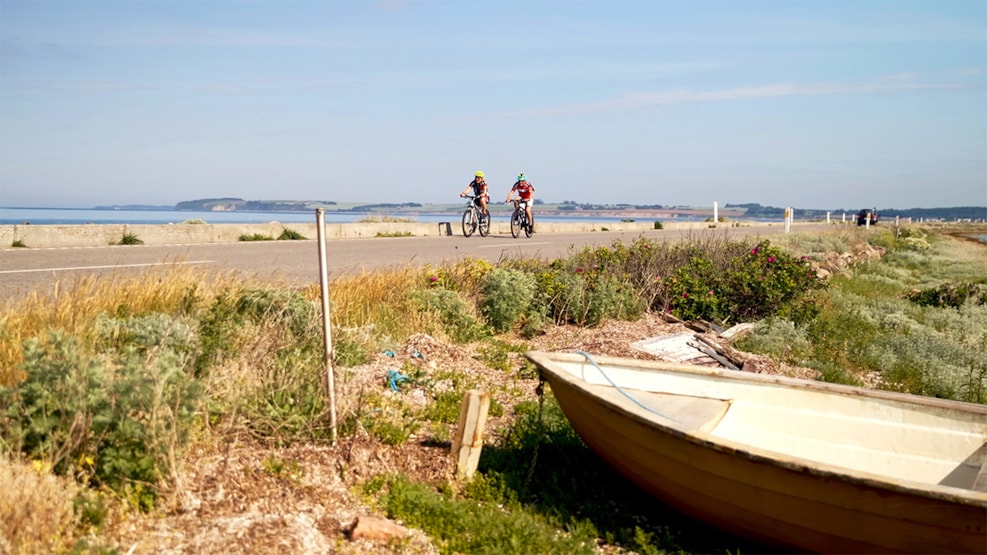
Tour suggestion: Historical experiences
A wonderful tour around Assens!
Description of the historical experience route
Start and end at Assens Harbour.
Open the route on på Google Maps here: Historical experience.
Thorøhuse
Follow Sdr. Ringvej from Assens towards Thorøhuse, a historic fishing village.
Thorø
Thorø is a scenic area with a fascinating history. Although its name in Danish suggests it is an island, Thorø has been connected to Funen since the mid-1990s due to sand deposits. You can park at Thorøhuse Forsamlingshus and take a lovely 3 km walk around the area. A small bridge leads you over a drainage canal from Noret into the peaceful landscape. Along the way, you can experience three charming colonies available for rent for everything from school camps to family gatherings. For nature lovers, the route offers fantastic views and winding paths. Look out over the Little Belt, where you can see Aarø at the entrance to Haderslev Fjord, Aabenraa further south, and Als on the horizon, as well as the dam leading to Helnæs.
Å Stranvej
Leads to a lovely beach near the campsite.
The Dungeon at the Slot’s Banke
Further ahead, the route turns right through Slots Alle. Consider taking a detour to the large castle mound and see the old dungeon at the top of the mound. Here, Bishop Jacob Erlandsen was imprisoned in 1259.
Hagenskov Gods
Hagenskov Gods, formerly known as Frederiksgave, is one of Denmark’s finest Neoclassical buildings, built in 1775 by architect Rosenberg. The manor was the summer residence of Prince Frederik VII when he was governor of Funen. The magnificent estate and its courtyard with a riding arena were used as a filming location for several scenes in the Danish TV series and film 1864, filmed in 2013. The manor can be viewed from the public road passing through the estate.
Spinderhuset
On the way to Ebberup, you will pass Spinderhuset, which once served as a gatehouse for the avenue leading to Hagenskov. From Prinsevej, turn left and then immediately right, crossing the old railway tracks.
Spindeskolen
Continue along Ravnekærvej, where no. 48 once housed a 19th-century spinning school.
Gamtofte Church
Cross Odensevej and continue through Voldbro to Gamtofte Church, dating back to the 12th century. Inside, you can admire beautiful modern stained-glass windows created by Peter Brandes, which fill the space with a unique light.
Memorial
Opposite the church, a memorial stone honors an eight-man aircraft crew who crashed in May 1944. A propeller from the aircraft stands beside it. The Lancaster bomber, hit by Luftwaffe fire before dropping mines near Kiel, left a visible crater. The rectory and two farms burned, and the church’s roof was damaged. Continue towards Assens.
Brahesborg
Brahesborg Gods, originally built as a Renaissance castle in 1656 by Jørgen Brahe, known as “The Little King of Funen.” The manor was later rebuilt in a Neoclassical style in 1756 and purchased in 1828 by Supreme Court lawyer F.W. Treschow. It has remained in the family ever since. Take a short detour through the farm buildings and notice the stripes in the cobblestone paving near the main building - these are serfdom stalls. Each tenant farm had its designated space, allowing the estate steward to easily check if all workers had arrived for their duties.
Galleri Sulegården
Galleri Sulegården is a fine example of the West Funen sulegård style. A sulegård is a traditional farmhouse with a unique timber construction featuring suler - large supporting beams that carry the roof structure. This design allows for high ceilings and rounded corners in the barn.